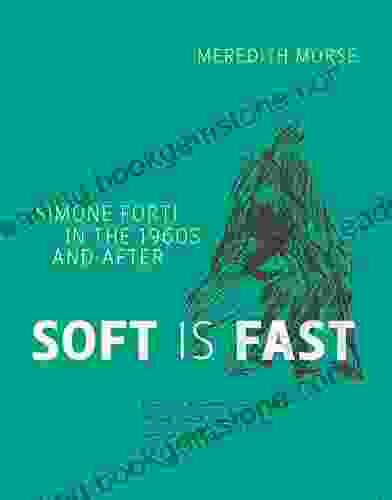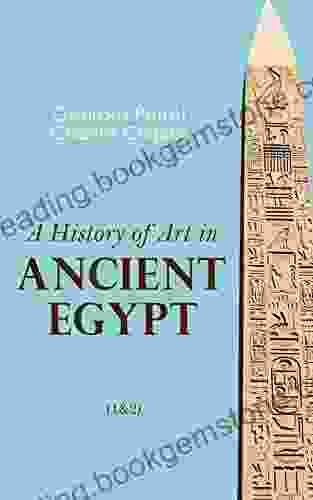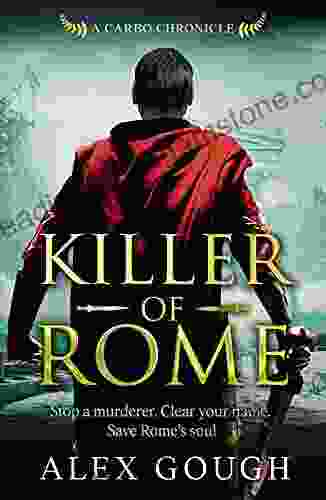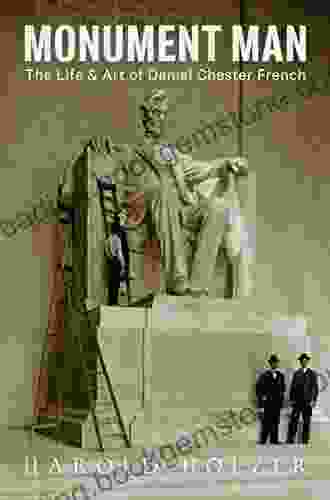Simone Forti and the Dance of the 1960s and Beyond

Simone Forti is an American dancer, choreographer, and teacher who is considered one of the pioneers of postmodern dance. She began her career in the 1960s, and her work has been influential in the development of contemporary dance.
5 out of 5
| Language | : | English |
| File size | : | 10069 KB |
| Text-to-Speech | : | Enabled |
| Screen Reader | : | Supported |
| Enhanced typesetting | : | Enabled |
| Word Wise | : | Enabled |
| Print length | : | 269 pages |
Forti was born in Florence, Italy, in 1935. She began studying dance at the age of four, and by the time she was a teenager, she was performing professionally. In 1959, she moved to New York City, where she studied with Merce Cunningham and Robert Dunn. Cunningham was a major influence on Forti, and she began to develop her own unique style of movement, which was characterized by its simplicity, spontaneity, and focus on the body's natural impulses.
In the early 1960s, Forti began to create her own dances. Her early works were often improvisational and experimental, and they explored the relationship between movement and space. In 1961, she created her first major work, "See Saw," which was a duet for herself and Yvonne Rainer. The dance was performed on a seesaw, and it explored the dynamics of balance and weight.
Over the years, Forti continued to develop her own unique style of dance. She began to incorporate elements of everyday life into her work, and she also began to explore the use of text and sound. In the 1970s, she began to work with video and film, and she created a number of groundbreaking works that explored the relationship between dance and technology.
Forti's work has been widely influential in the development of contemporary dance. She has been a major force in the development of postmodern dance, and her work has inspired countless other dancers and choreographers. She is a recipient of numerous awards, including the Guggenheim Fellowship and the MacArthur Fellowship. She is also a member of the American Academy of Arts and Sciences.
Forti's Dance Technique
Forti's dance technique is based on the principles of body awareness and improvisation. She believes that dance should be a natural expression of the body, and she encourages her dancers to explore their own unique movement possibilities. Forti's technique is often characterized by its simplicity and spontaneity, and she often uses everyday movements and gestures in her work.
Forti's dance technique is also influenced by her studies of martial arts and yoga. She believes that these practices can help dancers to develop a greater sense of body awareness and control. Forti's technique is also influenced by her interest in improvisation. She believes that improvisation can help dancers to find new and unexpected movement possibilities.
Forti's Work in the 1960s
The 1960s was a time of great change and experimentation in the dance world. Forti was one of the many dancers who were pushing the boundaries of dance and exploring new ways of moving. In the 1960s, Forti created some of her most groundbreaking works, including "See Saw," "Huddle," and "Rollers." These works were characterized by their simplicity, spontaneity, and focus on the body's natural impulses.
Forti's work in the 1960s helped to shape the development of postmodern dance. Postmodern dance is a style of dance that emerged in the 1960s and 1970s. It is characterized by its rejection of traditional forms and its focus on improvisation and experimentation. Forti's work was one of the major influences on the development of postmodern dance, and it continues to be influential today.
Forti's Work in the 1970s and Beyond
In the 1970s, Forti continued to develop her own unique style of dance. She began to incorporate elements of everyday life into her work, and she also began to explore the use of text and sound. In the 1980s, she began to work with video and film, and she created a number of groundbreaking works that explored the relationship between dance and technology.
Forti's work in the 1970s and beyond has continued to be influential in the development of contemporary dance. She is a recipient of numerous awards, including the Guggenheim Fellowship and the MacArthur Fellowship. She is also a member of the American Academy of Arts and Sciences.
Forti's Legacy
Simone Forti is one of the most important and influential dancers of the 20th century. Her work has helped to shape the development of postmodern dance, and it continues to be influential today. Forti is a pioneer in the field of dance, and her work has inspired countless other dancers and choreographers.
Forti's legacy is one of innovation and experimentation. She has always been willing to push the boundaries of dance, and she has never been afraid to try new things. Her work is a testament to the power of dance to express the human experience.
Simone Forti is a true pioneer in the field of dance. Her work has helped to shape the development of contemporary dance, and it continues to be influential today. Forti is a dancer, choreographer, and teacher who is dedicated to exploring the possibilities of movement. Her work is a testament to the power of dance to express the human experience.
5 out of 5
| Language | : | English |
| File size | : | 10069 KB |
| Text-to-Speech | : | Enabled |
| Screen Reader | : | Supported |
| Enhanced typesetting | : | Enabled |
| Word Wise | : | Enabled |
| Print length | : | 269 pages |
Do you want to contribute by writing guest posts on this blog?
Please contact us and send us a resume of previous articles that you have written.
 Best Book
Best Book Page Flip
Page Flip Bookshelf
Bookshelf Literary loom
Literary loom Chapter
Chapter Bookish
Bookish PageTurner
PageTurner Bibliophile
Bibliophile Story
Story Inkwell
Inkwell Bookworm
Bookworm Labyrinth
Labyrinth Plot Twist
Plot Twist Prose
Prose Paperback
Paperback Storyteller
Storyteller Sanctuary
Sanctuary Fiction
Fiction Reading
Reading Chronicle
Chronicle Read
Read Frank Catalano
Frank Catalano Josh Golding
Josh Golding Max Eisen
Max Eisen Roberto Lovato
Roberto Lovato Franklyn Griffiths
Franklyn Griffiths Alejandra Viscarra
Alejandra Viscarra Monica Russel
Monica Russel Katie Daisy
Katie Daisy Stephen Davis
Stephen Davis Rhonda K Garelick
Rhonda K Garelick Tracy Michaud
Tracy Michaud Paul J Pastor
Paul J Pastor Laurel Hart
Laurel Hart Albert Woodfox
Albert Woodfox Peter Gray
Peter Gray Alex Wagner
Alex Wagner Michael Samerdyke
Michael Samerdyke Alex Gough
Alex Gough Roland Nyns
Roland Nyns Alastair Campbell
Alastair Campbell Roger Bennett
Roger Bennett William Gaskill
William Gaskill Jessica Fanigliulo
Jessica Fanigliulo Kayleigh Mcenany
Kayleigh Mcenany Alex Moore
Alex Moore Amy Latta
Amy Latta Antony Sher
Antony Sher Giovanni Iannoni
Giovanni Iannoni Peter Gethers
Peter Gethers Luciano Thomazelli
Luciano Thomazelli Alan Rabinowitz
Alan Rabinowitz Gail Pool
Gail Pool Dominique Dupuy
Dominique Dupuy Herman Wouk
Herman Wouk Sandie Heron
Sandie Heron Samuel R Delany
Samuel R Delany Judith M Heimann
Judith M Heimann Shelli Marie
Shelli Marie Amanda Lawrence
Amanda Lawrence John French
John French Thomas Geve
Thomas Geve Anthony Doerr
Anthony Doerr Despina Stratigakos
Despina Stratigakos Anita Friedman
Anita Friedman Emily Maker
Emily Maker Beth Alison Maloney
Beth Alison Maloney Aer Ki Jyr
Aer Ki Jyr 1st Edition Kindle Edition
1st Edition Kindle Edition My Daily Spanish
My Daily Spanish J R R Tolkien
J R R Tolkien Alexa Martin
Alexa Martin Ann Torrence
Ann Torrence Wes Mcdowell
Wes Mcdowell Albert Samaha
Albert Samaha A J Alonzo Wind
A J Alonzo Wind Lon Varnadore
Lon Varnadore Ginger Zee
Ginger Zee Stephen Bodio
Stephen Bodio Hayley Mills
Hayley Mills Veronica Sekules
Veronica Sekules Alfons Kaiser
Alfons Kaiser Alan Smith
Alan Smith Tom Wood
Tom Wood Amy Tan
Amy Tan Michael Connelly
Michael Connelly Christian Cameron
Christian Cameron Jesse Wente
Jesse Wente Peter Burke
Peter Burke Rachel Mcmillan
Rachel Mcmillan Adrian Tchaikovsky
Adrian Tchaikovsky Huma Abedin
Huma Abedin Ed Miller
Ed Miller Ajax Lygan
Ajax Lygan Anne Vipond
Anne Vipond A K Duboff
A K Duboff Agatha Christie
Agatha Christie Alan Laycock
Alan Laycock Sabrina Devonshire
Sabrina Devonshire Josh Holliday
Josh Holliday Christoph Brueck
Christoph Brueck Greg Jenkins
Greg Jenkins Tod Benoit
Tod Benoit Randy Palmer
Randy Palmer David Morrell
David Morrell Tom Dunkel
Tom Dunkel Heather Hutchison
Heather Hutchison Viola Shipman
Viola Shipman Junheng Li
Junheng Li Edmund Morris
Edmund Morris Wakefield Poole
Wakefield Poole Dima Ghawi
Dima Ghawi Learning Through Activities
Learning Through Activities Roxana Robinson
Roxana Robinson Aleron Kong
Aleron Kong Aleksandar Hemon
Aleksandar Hemon Eric Goldberg
Eric Goldberg Nihon Vogue
Nihon Vogue Masahiro Kasahara
Masahiro Kasahara Terez Mertes Rose
Terez Mertes Rose Andy Steves
Andy Steves Betty Reid Soskin
Betty Reid Soskin Robert Condon
Robert Condon Gary Jennings
Gary Jennings M Osman Siddique
M Osman Siddique Ben D Over
Ben D Over Brenda Barrett
Brenda Barrett Alex Zadeh
Alex Zadeh Jeff Lieberman
Jeff Lieberman Fiona Humberstone
Fiona Humberstone Faith Hunter
Faith Hunter Geoff Hann
Geoff Hann Bobby Love
Bobby Love Chip Kidd
Chip Kidd Jessica Lee
Jessica Lee Bernard Cornwell
Bernard Cornwell Peter Carey
Peter Carey Stuart Thornton
Stuart Thornton Natasha Boyd
Natasha Boyd Robert M Kerns
Robert M Kerns Ivy Mix
Ivy Mix Terry Barrett
Terry Barrett Mia P Manansala
Mia P Manansala Richard Hunt
Richard Hunt A R Corbin
A R Corbin Russell Staiff
Russell Staiff Jennifer Egan
Jennifer Egan Linda Bloomfield
Linda Bloomfield Seth Kugel
Seth Kugel Karl Beecher
Karl Beecher Eric Sprinkle
Eric Sprinkle Hans Keilson
Hans Keilson Mark Panek
Mark Panek Ken Layne
Ken Layne Matt Ortile
Matt Ortile Alastair Reynolds
Alastair Reynolds Geninne Zlatkis
Geninne Zlatkis Paul Clark
Paul Clark Mary Karr
Mary Karr Ella Frances Sanders
Ella Frances Sanders Aileen Bordman
Aileen Bordman Charles Chipiez
Charles Chipiez Markus S Agerer
Markus S Agerer Bart Rulon
Bart Rulon Abdulrazak Gurnah
Abdulrazak Gurnah Scott Bukatman
Scott Bukatman Alejandro Zambrano Sevillano
Alejandro Zambrano Sevillano Aeham Ahmad
Aeham Ahmad Allison Moore
Allison Moore Emilie Conrad Da Oud
Emilie Conrad Da Oud Arlene Croce
Arlene Croce Abdul El Sayed
Abdul El Sayed Craig Johnson
Craig Johnson Kirsten Weiss
Kirsten Weiss Alex Dudok De Wit
Alex Dudok De Wit Danielle Donaldson
Danielle Donaldson Robyn Blakeman
Robyn Blakeman Akwaeke Emezi
Akwaeke Emezi Al Davidson
Al Davidson Alan Dean Foster
Alan Dean Foster Laura Galloway
Laura Galloway Nancy Milford
Nancy Milford V A Lewis
V A Lewis Bradley Wright
Bradley Wright David Conyers
David Conyers Adrien Gombeaud
Adrien Gombeaud Ann Maclean
Ann Maclean Patrick J Flannigan
Patrick J Flannigan Saleem H Ali
Saleem H Ali Richard Poulin
Richard Poulin P T Books
P T Books Marco Livingstone
Marco Livingstone Tom Swimm
Tom Swimm Sherry Turkle
Sherry Turkle Rob Stone
Rob Stone A J Verdelle
A J Verdelle Martin Mosebach
Martin Mosebach Alec Potrero
Alec Potrero Alex Tannen
Alex Tannen Dave Addey
Dave Addey A D Davies
A D Davies Alex Robinson
Alex Robinson Simon Callow
Simon Callow George Monbiot
George Monbiot Daniel Kay Hertz
Daniel Kay Hertz Irmgard Bartenieff
Irmgard Bartenieff Jeffery H Haskell
Jeffery H Haskell Alan Maimon
Alan Maimon Fadel Abuelula
Fadel Abuelula D K Holmberg
D K Holmberg Jennie Allen
Jennie Allen Alicia Drake
Alicia Drake Jennifer Sewing
Jennifer Sewing Alda Sigmundsdottir
Alda Sigmundsdottir Alan Carr
Alan Carr Richard Lloyd Parry
Richard Lloyd Parry Alex Kerr
Alex Kerr Francis M Higman
Francis M Higman Yahtzee Croshaw
Yahtzee Croshaw Herman Melville
Herman Melville Eileen Sorg
Eileen Sorg Tim Lawrence
Tim Lawrence Adrien Clautrier
Adrien Clautrier Adele Wagstaff
Adele Wagstaff Evanna Lynch
Evanna Lynch J Pal
J Pal Elizabeth Holmes
Elizabeth Holmes Diane Mierzwik
Diane Mierzwik Dale Olausen
Dale Olausen Glyn Macey
Glyn Macey Anne Thomas Soffee
Anne Thomas Soffee Troy Taylor
Troy Taylor Alan Jacobson
Alan Jacobson Grace Lees Maffei
Grace Lees Maffei J D Adams
J D Adams Osman Yousefzada
Osman Yousefzada Mary Monroe
Mary Monroe Aisha Sabatini Sloan
Aisha Sabatini Sloan Stuart Taylor
Stuart Taylor Charlene Tarbox
Charlene Tarbox Lee Goldberg
Lee Goldberg Jean Pederson
Jean Pederson Ava Reid
Ava Reid Colette Pitcher
Colette Pitcher Garret Romaine
Garret Romaine Jennifer Lilya
Jennifer Lilya Alex Danchev
Alex Danchev Harry Thurston
Harry Thurston John Gold
John Gold John Phillip Santos
John Phillip Santos Scott Harwood
Scott Harwood Cecil Jenkins
Cecil Jenkins Joseph Kim
Joseph Kim Sarah Crafts
Sarah Crafts Paul Hallas
Paul Hallas Harold Holzer
Harold Holzer George Smith
George Smith Gerhard Haase Hindenberg
Gerhard Haase Hindenberg K J Gillenwater
K J Gillenwater Albert Blasco Peris
Albert Blasco Peris Magunta Dayakar
Magunta Dayakar Tom Scocca
Tom Scocca Alan Grainger
Alan Grainger Don Yaeger
Don Yaeger Bill Manley
Bill Manley Andrew Solomon
Andrew Solomon Kazuaki Tanahashi
Kazuaki Tanahashi Robert Clark
Robert Clark Noam Oswin
Noam Oswin William Golding
William Golding Belinda Smith Cicarella
Belinda Smith Cicarella George Bernard Shaw
George Bernard Shaw Ted Okuda
Ted Okuda Akira Kurosawa
Akira Kurosawa Haroon Moghul
Haroon Moghul Robert Marshall
Robert Marshall Rozsika Parker
Rozsika Parker Neil Wilson
Neil Wilson Ally Morin
Ally Morin Francisco Martin Rayo
Francisco Martin Rayo Stefan Zweig
Stefan Zweig Ricardo Victoria
Ricardo Victoria Smashing Magazine
Smashing Magazine Charles De Lint
Charles De Lint Alex Hibbert
Alex Hibbert Tom Weaver
Tom Weaver Nikolaus Julius Weichselbaumer
Nikolaus Julius Weichselbaumer Nancy Marguerite Anderson
Nancy Marguerite Anderson Keisha Ervin
Keisha Ervin Aleksandr Solzhenitsyn
Aleksandr Solzhenitsyn Allison Pataki
Allison Pataki Aleksandar Nedeljkovic
Aleksandar Nedeljkovic Vinny Sagoo
Vinny Sagoo Yvvette Edwards
Yvvette Edwards Alex Tizon
Alex Tizon Laurie Birnsteel
Laurie Birnsteel Adeline Lim
Adeline Lim Martin Edge
Martin Edge Alex Kava
Alex Kava Robert Byron
Robert Byron Tim Bonyhady
Tim Bonyhady Cheech Marin
Cheech Marin Adam Roberts
Adam Roberts Philip Norman
Philip Norman Danie Ware
Danie Ware Alecia J
Alecia J Christopher G Nuttall
Christopher G Nuttall Fanny Kelly
Fanny Kelly Graham Mcneill
Graham Mcneill Fiona Maccarthy
Fiona Maccarthy Jane Patrick
Jane Patrick Jack Anderson
Jack Anderson Dustin Lynx
Dustin Lynx Michael Booth
Michael Booth Alejandro Jodorowsky
Alejandro Jodorowsky Jack Jewers
Jack Jewers James Baldwin
James Baldwin Anais Granofsky
Anais Granofsky Anna M Church
Anna M Church Bill Dixon
Bill Dixon Jason Cordova
Jason Cordova Chloe Garner
Chloe Garner Christopher P Jones
Christopher P Jones Kerry Trout
Kerry Trout Sara Barnes
Sara Barnes Adrienne Keene
Adrienne Keene Christian Stoll
Christian Stoll Richard Ayoade
Richard Ayoade Julie Collins
Julie Collins Hob Osterlund
Hob Osterlund Anne Macleod
Anne Macleod John Varley
John Varley John Maloof
John Maloof Alan Colquhoun
Alan Colquhoun Afua Hirsch
Afua Hirsch Heidi Moksnes
Heidi Moksnes Alex White
Alex White Mark Christopher Weber
Mark Christopher Weber Akiko Busch
Akiko Busch Pam Cook
Pam Cook Paul Curry
Paul Curry Adam Nayman
Adam Nayman Stefano Mancuso
Stefano Mancuso Eliane Strosberg
Eliane Strosberg Ramy Vance
Ramy Vance Julian Hoxter
Julian Hoxter Giannalberto Bendazzi
Giannalberto Bendazzi Tamara Thiessen
Tamara Thiessen Alex Kotlowitz
Alex Kotlowitz Sjeng Scheijen
Sjeng Scheijen Robin Meloy Goldsby
Robin Meloy Goldsby Alex Grey
Alex Grey Akaisha Kaderli
Akaisha Kaderli Alan Veale
Alan Veale Tara Ellis
Tara Ellis F Sehnaz Bac
F Sehnaz Bac Reshonda Tate Billingsley
Reshonda Tate Billingsley Gay Talese
Gay Talese Julian Bell
Julian Bell Michael Sayman
Michael Sayman Kelly Bowen
Kelly Bowen Aimee Alexander
Aimee Alexander Mary Ann Shaffer
Mary Ann Shaffer Inman Learning
Inman Learning Rian Hughes
Rian Hughes Malka Older
Malka Older Lynsey Addario
Lynsey Addario Alex Jennings
Alex Jennings Lee Craker
Lee Craker Charles Mccormac
Charles Mccormac Danny Newman
Danny Newman Nancy Beiman
Nancy Beiman Tupac Shakur
Tupac Shakur Alan M Davis
Alan M Davis Jeanne Filler Scott
Jeanne Filler Scott Bob Rohm
Bob Rohm Claudia Rankine
Claudia Rankine Michelle Loucadoux
Michelle Loucadoux Rosa Park
Rosa Park Armond T Joyce
Armond T Joyce Eddie R Hicks
Eddie R Hicks Geronimo
Geronimo Marian Filar
Marian Filar Kim E Nielsen
Kim E Nielsen Lauren D Schmalz
Lauren D Schmalz Alan Verskin
Alan Verskin St Paul S Greek Orthodox Church
St Paul S Greek Orthodox Church Lama Rod Owens
Lama Rod Owens Laurieann Gibson
Laurieann Gibson Peter Warner
Peter Warner A E Filby
A E Filby Judy A Bernstein
Judy A Bernstein John Gonzalez
John Gonzalez Andrew Morton
Andrew Morton N Dia Rae
N Dia Rae Antonio Centeno
Antonio Centeno Candida R Moss
Candida R Moss Michele Bousquet
Michele Bousquet Ann Mah
Ann Mah Alberlin Torres
Alberlin Torres Alistair Urquhart
Alistair Urquhart Barbara Brownie
Barbara Brownie Louise Erdrich
Louise Erdrich Timothy Samara
Timothy Samara Matt Dickinson
Matt Dickinson Harlow Robinson
Harlow Robinson Michael J Fox
Michael J Fox Rachael Cerrotti
Rachael Cerrotti Marco Leonel Garcia Gonzalez
Marco Leonel Garcia Gonzalez Brien Foerster
Brien Foerster Michael Reyes
Michael Reyes Shaul Kelner
Shaul Kelner Matthew Bourne
Matthew Bourne Winifred Brown
Winifred Brown Richard F Weyand
Richard F Weyand Nikki Giovanni
Nikki Giovanni Mariusz Krukowski
Mariusz Krukowski Gareth C Meadows
Gareth C Meadows Alex Hillkurtz
Alex Hillkurtz Cherrie Moraga
Cherrie Moraga Michael Anderson
Michael Anderson Cassia Cogger
Cassia Cogger Gerald L Kooyman
Gerald L Kooyman Adele P Margolis
Adele P Margolis Al Saadiq Banks
Al Saadiq Banks Akiva Teddy Macleod
Akiva Teddy Macleod Bernard Diederich
Bernard Diederich Naughty Dog
Naughty Dog Paul Austin
Paul Austin Massoud Hayoun
Massoud Hayoun Sarah Polley
Sarah Polley Alex Foster
Alex Foster Albert Corbeto
Albert Corbeto Laurie Schneider Adams
Laurie Schneider Adams Justin Monroe
Justin Monroe A J Diamond
A J Diamond Sean Hall
Sean Hall Anne Glenconner
Anne Glenconner G J Ogden
G J Ogden Ak Turner
Ak Turner A J Liebling
A J Liebling John Perrier
John Perrier Juhea Kim
Juhea Kim Rocio Carvajal
Rocio Carvajal Alan Sanders
Alan Sanders Luke F D Marsden
Luke F D Marsden Cynthia D Yoder
Cynthia D Yoder C N Phillips
C N Phillips Mary Brooks Picken
Mary Brooks Picken Richard Doetsch
Richard Doetsch Guy Kawasaki
Guy Kawasaki John Ingledew
John Ingledew Peter Samuel
Peter Samuel R J Patterson
R J Patterson Aimee Nezhukumatathil
Aimee Nezhukumatathil Living Languages
Living Languages Lawrence F Lihosit
Lawrence F Lihosit Sarah Spencer
Sarah Spencer E C Godhand
E C Godhand Michael Weeks
Michael Weeks Paula Marantz Cohen
Paula Marantz Cohen Lavonne Mueller
Lavonne Mueller Gregory Benford
Gregory Benford Susan Evenson
Susan Evenson Fluent In Korean
Fluent In Korean Jeffrey Spivak
Jeffrey Spivak Aurora Levins Morales
Aurora Levins Morales 3rd Edition Kindle Edition
3rd Edition Kindle Edition Joan Druett
Joan Druett Kindle Edition
Kindle Edition Adrian Dater
Adrian Dater Chimamanda Ngozi Adichie
Chimamanda Ngozi Adichie Geert Mak
Geert Mak Katja Schmitt
Katja Schmitt Amanda Gorman
Amanda Gorman Donna Digiuseppe
Donna Digiuseppe Afia Atakora
Afia Atakora Keila Rowe
Keila Rowe Nicki Grace
Nicki Grace Joseph Campbell
Joseph Campbell D Rus
D Rus James Willis
James Willis Torben Landskrone
Torben Landskrone Alexa West
Alexa West C M Carney
C M Carney Erika Hecht
Erika Hecht Robert Arp
Robert Arp Alex Berenson
Alex Berenson Aki Choklat
Aki Choklat Mark William Shaw
Mark William Shaw Al Sharpton
Al Sharpton Rudy Rucker
Rudy Rucker S Elizabeth
S Elizabeth Frances Kai Hwa Wang
Frances Kai Hwa Wang Misba
Misba Alastair Vere Nicoll
Alastair Vere Nicoll Alan Murphy
Alan Murphy Siddharth Anbalagan
Siddharth Anbalagan Matthew Reilly
Matthew Reilly Paul Hadden
Paul Hadden A J Markam
A J Markam James S A Corey
James S A Corey Ntozake Shange
Ntozake Shange Jim Hinckley
Jim Hinckley Azalea Ellis
Azalea Ellis Felix R Savage
Felix R Savage Gary Zacny
Gary Zacny Alberto Manguel
Alberto Manguel L Loren
L Loren Thomas Huhti
Thomas Huhti Margaret Shepherd
Margaret Shepherd Howexpert Press
Howexpert Press Brad Thor
Brad Thor Elizabeth Mcpherson
Elizabeth Mcpherson Sarah Ferguson
Sarah Ferguson Georgia Purdom
Georgia Purdom C M Muller
C M Muller Nicolas Sellens
Nicolas Sellens Samantha Downing
Samantha Downing Greg Sestero
Greg Sestero Gregory Michie
Gregory Michie Rich Polanco
Rich Polanco Soon Y Warren
Soon Y Warren Dave Cornthwaite
Dave Cornthwaite Maturin Murray Ballou
Maturin Murray Ballou Ella Blake
Ella Blake Kimiko Kitani
Kimiko Kitani Kathleen Brady
Kathleen Brady Alan Bachmann
Alan Bachmann Jack L Grossman
Jack L Grossman Margaret Mitchell
Margaret Mitchell Eden Dawn
Eden Dawn Alain Kerzoncuf
Alain Kerzoncuf Alex Albrinck
Alex Albrinck Ninni Holmqvist
Ninni Holmqvist Tyler Green
Tyler Green William C Meadows
William C Meadows
Light bulbAdvertise smarter! Our strategic ad space ensures maximum exposure. Reserve your spot today!

 Colin RichardsonWinter Wonderlands: Embark on an Enchanting Journey with Giovanni Iannoni's...
Colin RichardsonWinter Wonderlands: Embark on an Enchanting Journey with Giovanni Iannoni's... Ernest J. GainesFollow ·9.5k
Ernest J. GainesFollow ·9.5k Ezekiel CoxFollow ·2.3k
Ezekiel CoxFollow ·2.3k Thomas PynchonFollow ·8.1k
Thomas PynchonFollow ·8.1k Lee SimmonsFollow ·16.3k
Lee SimmonsFollow ·16.3k Chuck MitchellFollow ·10.7k
Chuck MitchellFollow ·10.7k Yukio MishimaFollow ·2.7k
Yukio MishimaFollow ·2.7k Juan ButlerFollow ·12.7k
Juan ButlerFollow ·12.7k Neal WardFollow ·3.7k
Neal WardFollow ·3.7k
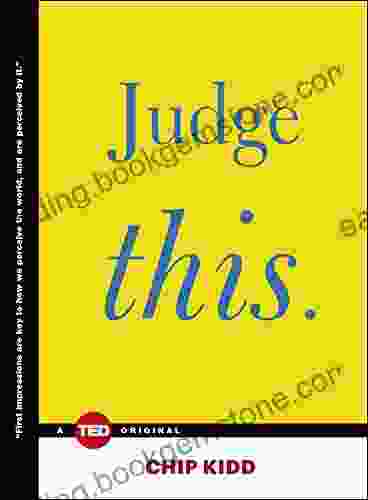
 Stephen King
Stephen KingJudge This: The Unforgettable Book Covers of Chip Kidd
Chip Kidd is one of the most...

 Curtis Stewart
Curtis StewartSovereignty, Security, and Stewardship: Interwoven...
The geopolitical landscape of the 21st...
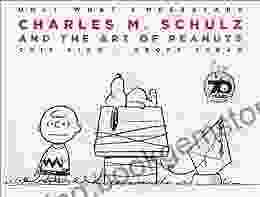
 Jay Simmons
Jay SimmonsOnly What Necessary: The Ultimate Guide to Minimalist...
Unveiling the Transformative...

 Austin Ford
Austin FordMaster Your Cricut Maker: Unleashing the Power of Design...
Embracing the Cricut...
5 out of 5
| Language | : | English |
| File size | : | 10069 KB |
| Text-to-Speech | : | Enabled |
| Screen Reader | : | Supported |
| Enhanced typesetting | : | Enabled |
| Word Wise | : | Enabled |
| Print length | : | 269 pages |


